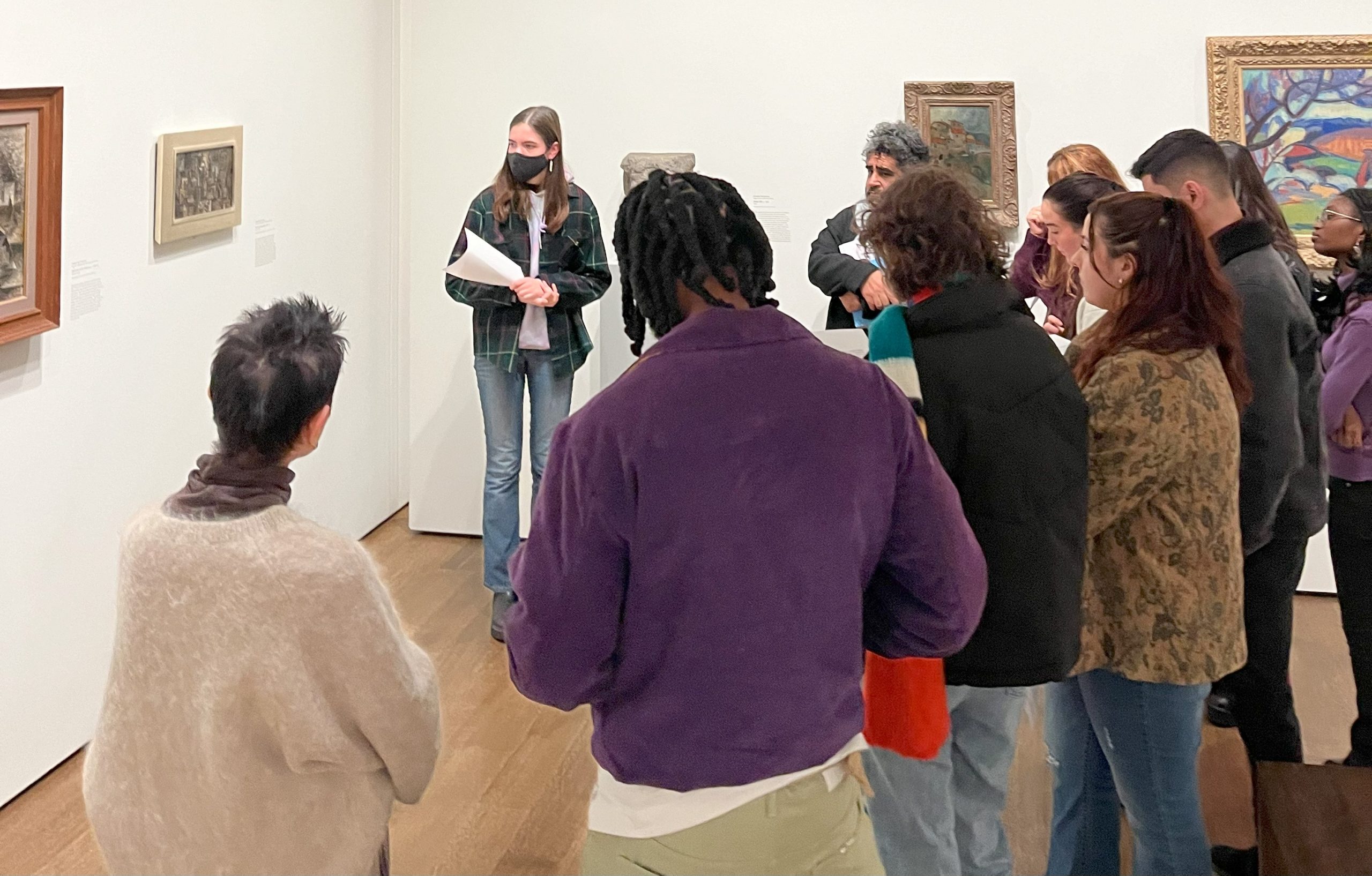Jose Falconi facilitated this Tour for his University of Connecticut students with the short text by Jorge Luis Borges, “The Two Kings and the Two Labyrinths.” Guests included Tur Woods, actor and theater developer for youth in Boston, and Francisco Alvarez, economist in the Masters Program at Harvard’s School of Public Health.

This semester, I had the wonderful opportunity to take Professor Falconi’s “Image as Witness” course at the University of Connecticut. This course aimed to understand the role of witnessing in relation to Human Rights activism, paying particular attention to the unique capabilities of images and text. As a final farewell to the course, our class took a trip to the Harvard Art Museum to explore an exhibit. While there, we were able to experience a new program titled “The Amoeba Tour”. When entering the exhibits, we were first tasked with reading aloud ‘The Two Kings and the Two Labyrinths” by Argentinian writer Jorge Luis Borges. Once the reading was complete, each member of the tour had to ask a lingering question about the text. Although this felt intimidating, I was surprised at the nature of the questions being asked. While a few were complex, many questions were aimed at gathering further information to build the images as we read. This demonstrates how integral images are to text and vice versa; to fully understand the text, we like to be able to clearly visualize the image. From there, we all were given five minutes to explore the exhibit and find a work of art that connected to the short story.
At the end of the time, we would each take turns presenting our chosen works of art. The process of selecting was exhilarating and stressful, leading to us re-reading the story several times as we scoured for pieces that fit. I landed on a piece titled “The End of the World” by David Alfaro Siqueiros. The image depicts a world in complete ruins with one small man still surviving. Although every other aspect of the painting is textured and relatively realistic, the man is two-dimensional and cartoonish. What struck me the most about this painting was its title. I have always imagined the end of the world as the end for all of us, so the deliberate choice to designate a space for a survivor within the image surprised me. It reminded me of the quote from the reading, “Glory to him who does not die.”
After the five minutes were up, each person became a tour guide for their chosen piece. We each explained what the work of art displayed and what we perceived to be its relationship with the text. This required a learning curve for each presenter, as we each were challenged to draw direct parallels and recite pieces of the text. My peers and I had all chosen different paintings, allowing for the addition of a new perspective across multiple different pieces of art. This was a really interesting and fulfilling way to explore a museum exhibit. Museums often feel very intimidating and difficult to interpret the works of art correctly, however the base understanding of the short story allows all participants to start on the same level. From there, we were able to step into the role of an artist and co-creator of meaning through leading the tours ourselves.
After our tours were over, I felt more personally connected to the art pieces than if I had experienced them in a traditional manner. Connecting back to our course, I found the Amoeba tour to be an interesting demonstration of the alliance of text and images. In order to pick a painting, it was first necessary to understand the story we had been given. In order to match the text to an image however, we must understand the ways in which paintings grab our attention and why. The Amoeba tour is an incredible and revolutionary way to create dialogue and bring out the ability in all of us to co-create meaning. I would recommend this experience and am excited to see it implemented in museums across the states.
*2023-2024 UCHI Undergraduate Research Fellow, Floor Mentor for Human Rights and Actions Learning Community